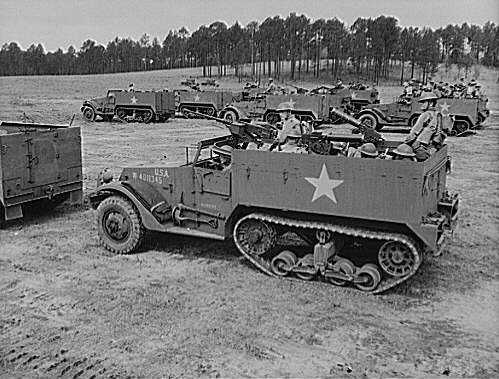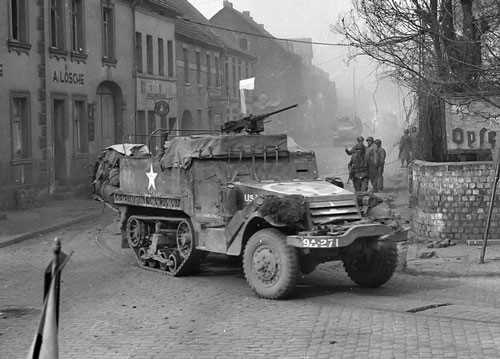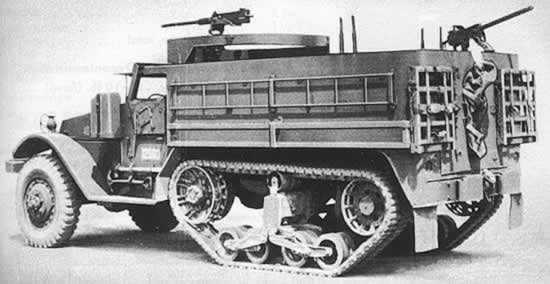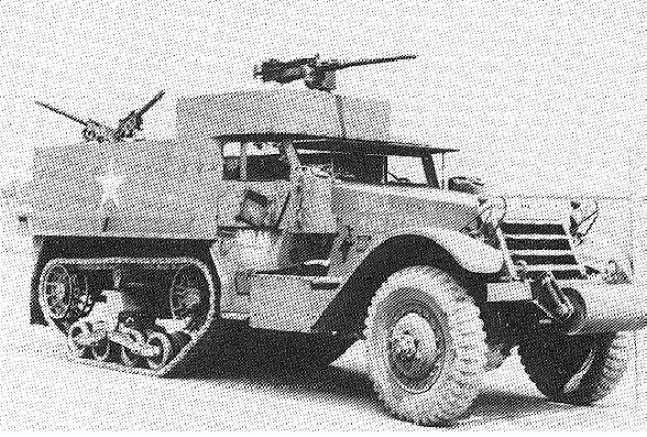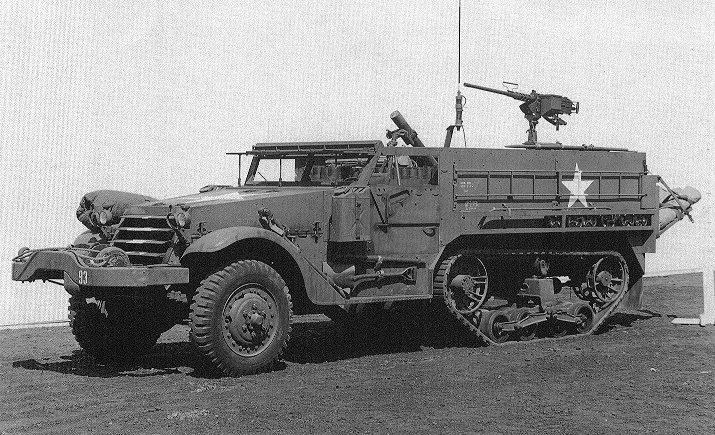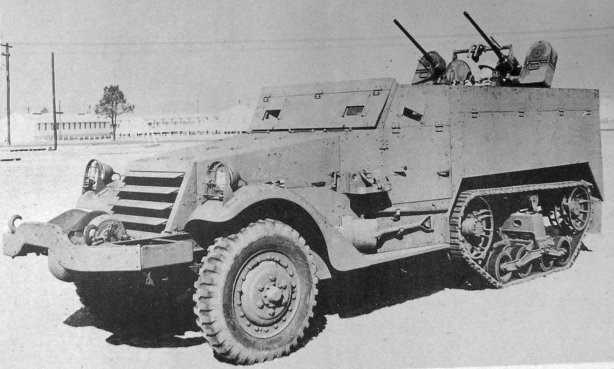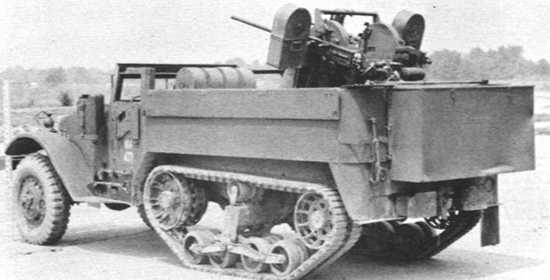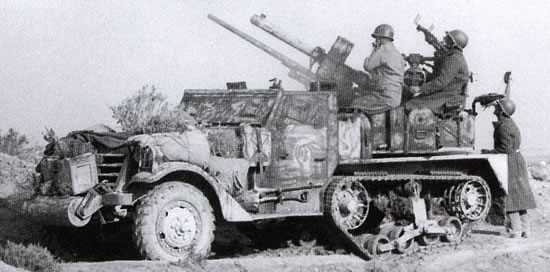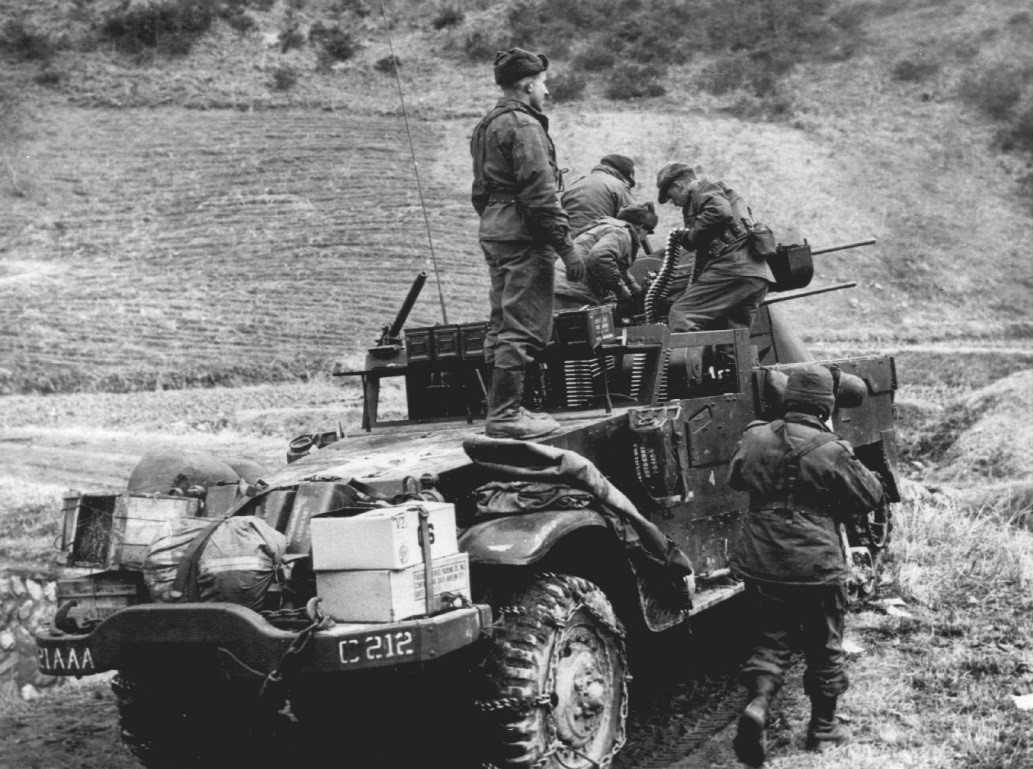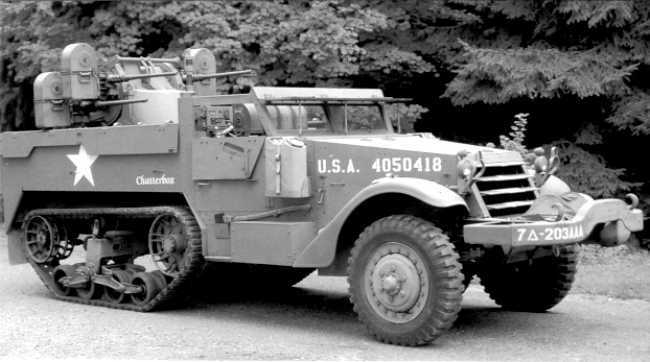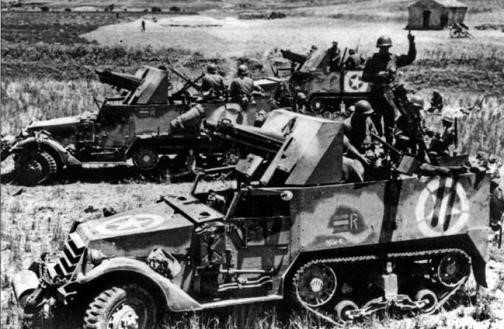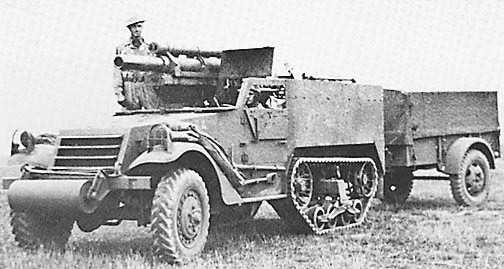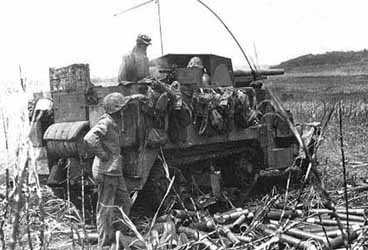American Half Tracks
The origins of the US halftrack were based on the French Citroen-Kegresse design, the US army had purchased two of these semi-tracked vehicles as far back as 1925. The first halftracks to be standardised was the M2 and M3, both were similar but functioned in different roles with the M2 operating as a gun tractor and the M3 a personnel carrier.
In 1941 the US army decided to mount a standard M1 mortar on a basic halftrack and the first halftracks to be developed in this role was the M4 and the later M4A1, both of these were based on the M2 and had a rear facing mortar, the M21 was based on the M3 and the major change was the frontal firing mortar.
Early in World War Two, the US Military recognised the importance of having a fully mobile air defence system that could keep pace with armoured units on the field of battle, and this need started up a whole series of half-track based vehicles mounting various weapons on different mounts. These were mainly mounted on the M3 and M5 chassis.
Various artillery pieces were also mounted on the M3, and these were used in the direct fire roles, the M3 GMC was employed as a tank destroyer before the introduction of the M10 GMC. The T-30 and T-19 were Infantry howitzers and provided support for armoured assaults.

